A Cap of Maintenance made in the classic heraldic style.
I offered to make a hat for my friend Giles to go with his new red houppelande – he asked for a Cap of Maintenance in early 15th century style.
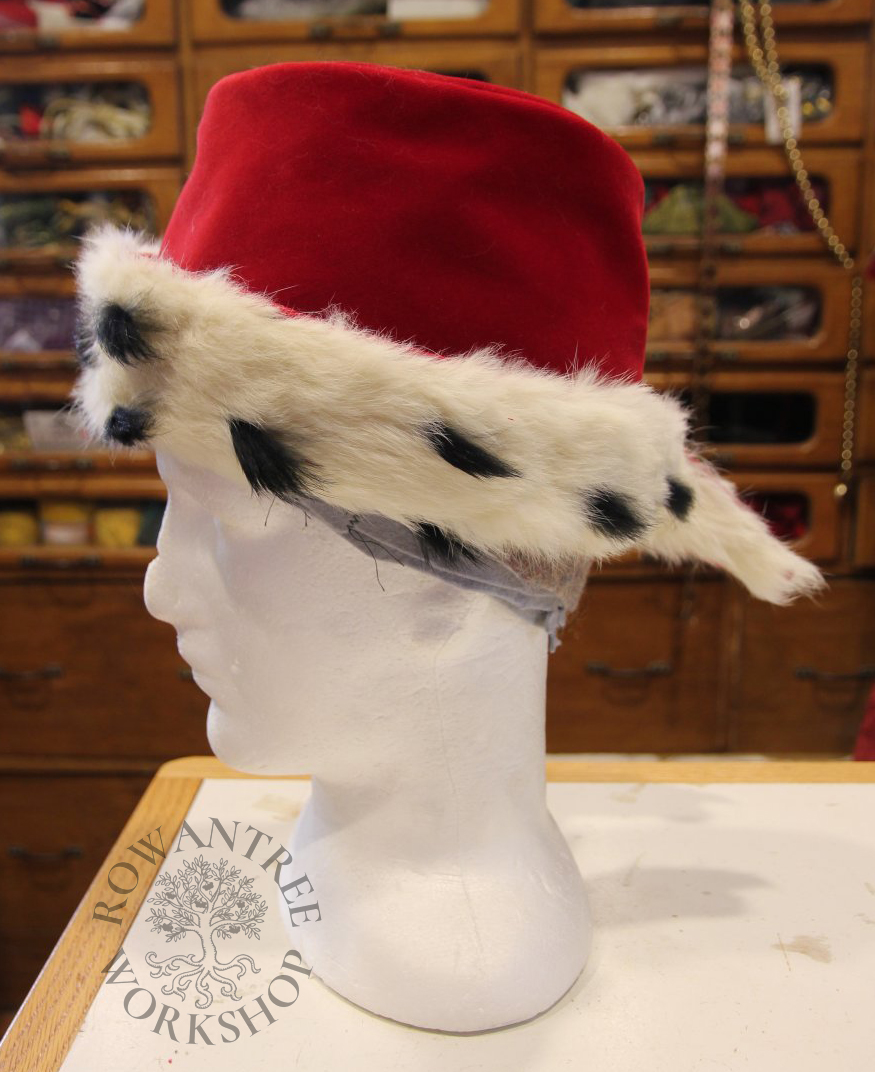
Research and Design
The cap of maintenance is a ceremonial cap of crimson velvet lined with ermine, worn as a sign of nobility or special honour (Wikipedia). Fox Davies (1978) notes that such caps were in use from at least the 14th century. They were worn as marks of rank for Baron and above, and are represented in heraldry as the Chapeau -.a bycocket in reverse, with split tails.
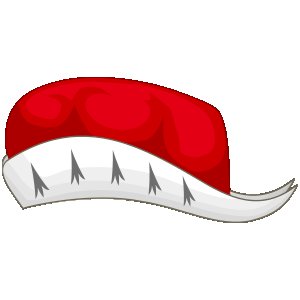
Source: Wikipedia
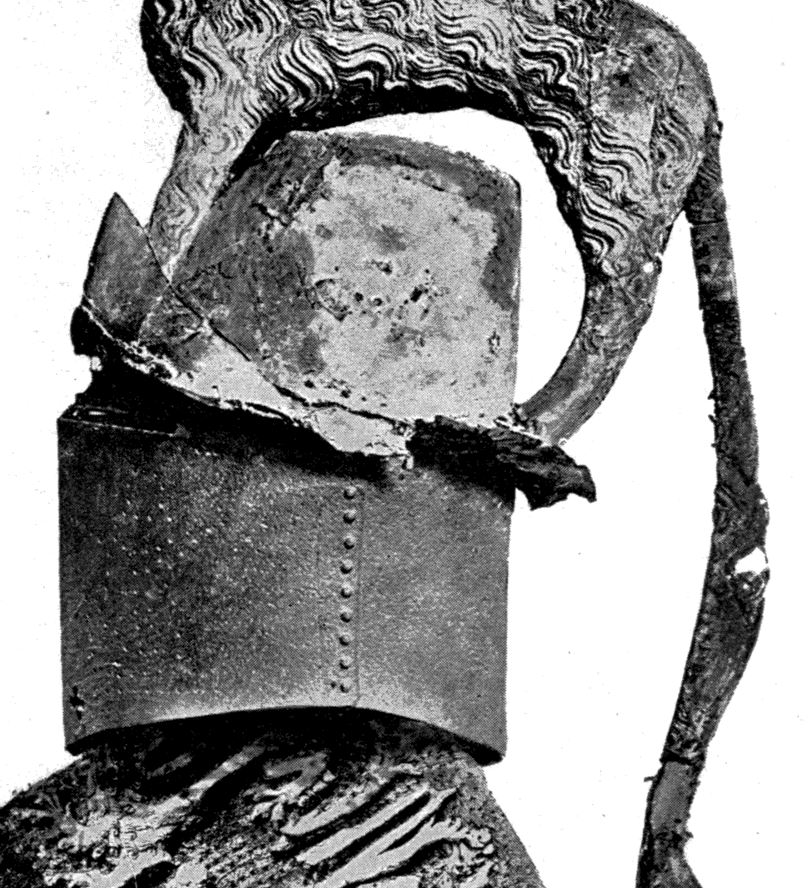
Source: Fox Davies (1978)

Fox Davies notes that Caps of Maintenance were always crimson, with a brim of ermine. I based the design on a combination of the remains of the 14th century cap of the Black Prince (now only remnants), the classic heraldic depiction and images in heraldic art.
Construction
I padded up my headform to the right size, and then patterned the hat in paper. I debated making a separate brim, but decided that a fold-up brim would work best with the tails. I checked that Giles was happy with the proportions, then cut it out in red velvet and canvas and basted them together.
I machine sewed the back seam, pressed it open and catch-stitched the edges to the canvas, then sewed the tip on in the same way. I turned up the hem along the base and around the tails, basted this and catch-stitched it to the canvas.
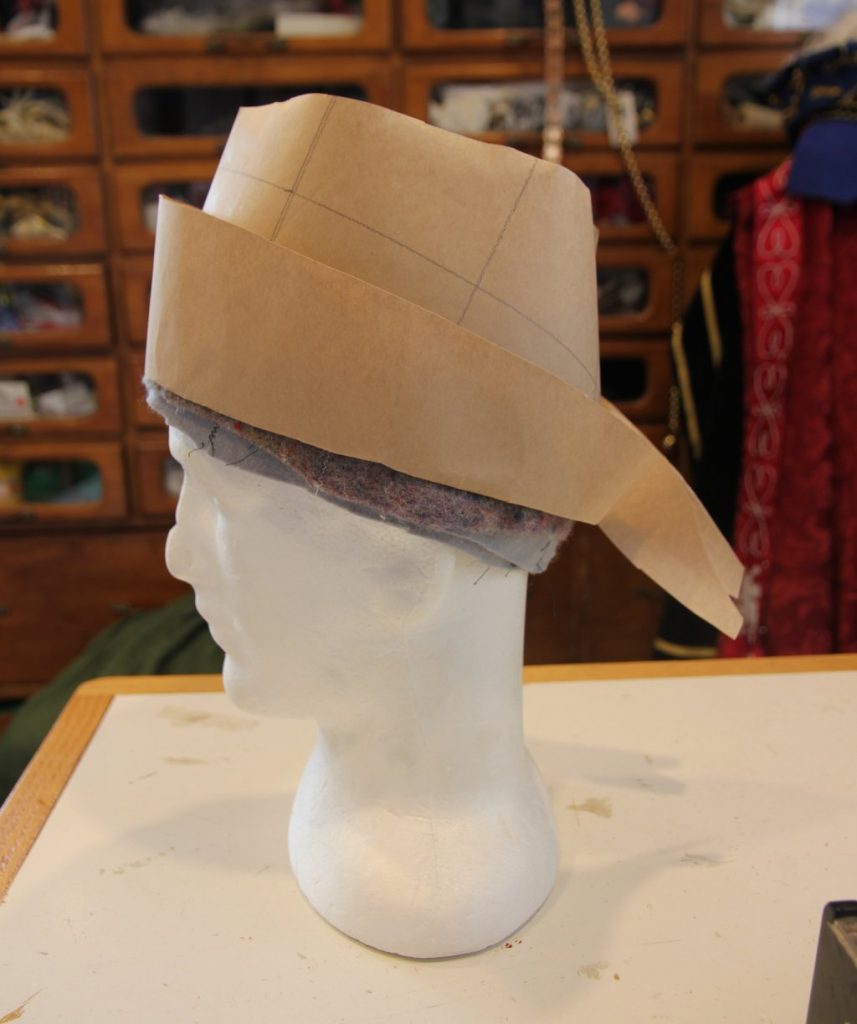

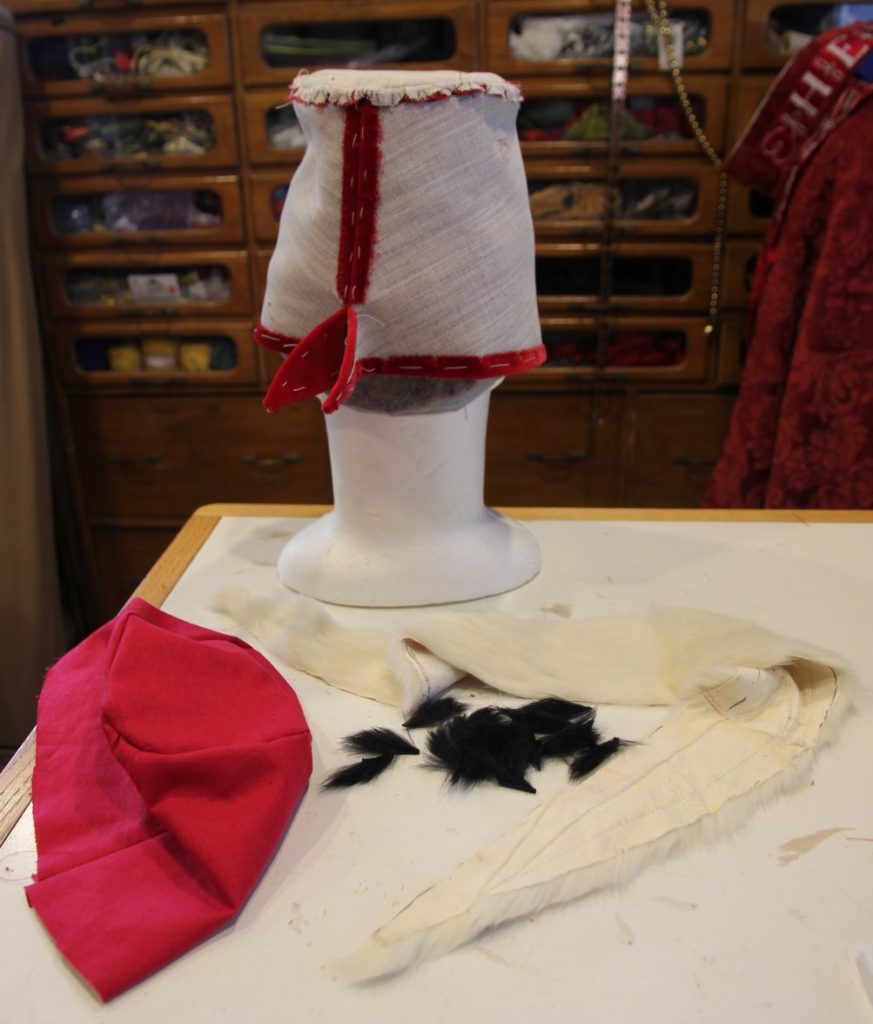
I turned the hat, turned up the brim and lined the hat in linen (same pattern minus the brim).
I made a brim with fake ermine out of mink and rabbit furs, using the same technique as the 14th century Bycocket and sewed this onto the outside of the brim.

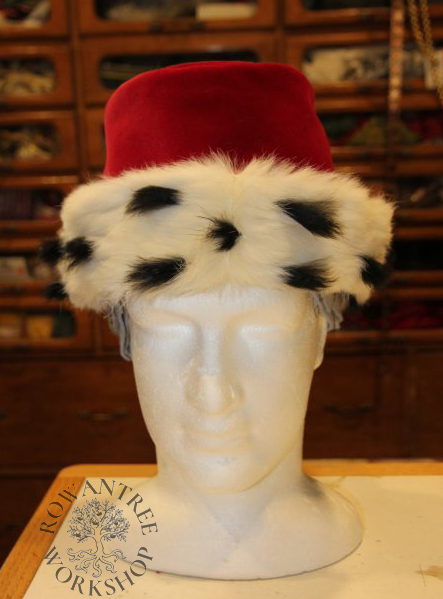
Afterthoughts
In retrospect, I think that separating the tails at the back (leaving a little plain edge at the back) would look closer to the original Chapeau shape, but Giles requested that the tails join at the back.
And, as for the Bycocket of Maintenance I made previously, I really should have had the fur direction going vertical, rather than horizontal. Next time…

